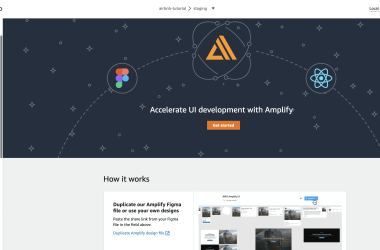Services Reaching Full End-of-Support in 2025
These services will cease operations entirely for all customers by the end of 2025, meaning no further access, updates, or support.
-
AWS IoT Analytics
End Date: December 15, 2025
Impact: This managed service for analyzing IoT device data will no longer process queries or store data after the deadline. Existing pipelines will stop functioning, potentially disrupting real-time analytics for IoT applications in industries like manufacturing and healthcare.
Migration Recommendations: Transition to a combination of Amazon Kinesis Data Streams for ingestion, Amazon Data Firehose for processing, AWS Glue for ETL jobs, Amazon Athena for querying, and Amazon QuickSight for visualization. AWS provides detailed migration guides to minimize downtime. -
Classic Amazon S3 Glacier (Flexible Retrieval)
End Date: December 15, 2025
Impact: The original Glacier storage class, known for low-cost archival, will be discontinued. Data stored here must be retrieved and moved before the cutoff to avoid loss.
Migration Recommendations: Migrate to S3 Glacier Deep Archive or the newer S3 Intelligent-Tiering for automated cost optimization. AWS offers free data transfers within S3 and tools like the S3 Batch Operations console to automate bulk migrations. This retirement aligns with AWS’s push toward more flexible storage options. -
AWS WAF Classic
End Date: September 30, 2025
Impact: The legacy version of AWS Web Application Firewall will be fully retired, affecting any remaining configurations not upgraded from the classic model.
Migration Recommendations: Upgrade to the current AWS WAF, which integrates seamlessly with Amazon CloudFront, Application Load Balancer, and API Gateway. No data loss is expected, but testing in staging environments is advised. -
CloudWatch Evidently
End Date: October 17, 2025
Impact: This experimentation service for A/B testing and feature flags will shut down, halting ongoing experiments and evaluations.
Migration Recommendations: Switch to Amazon SageMaker Experiments or third-party tools like LaunchDarkly. Active customers can export results before the deadline. -
AWS Mainframe Modernization App Testing
End Date: October 7, 2025 (already reached)
Impact: This preview service for testing mainframe apps during modernization has ended support and is no longer available.
Migration Recommendations: Use AWS Application Migration Service or partner solutions for mainframe testing needs.
Services Entering Maintenance Mode in 2025 (No New Customers)
AWS is shifting several services to “maintenance mode,” closing them to new sign-ups while allowing existing customers continued access (with limited support). These moves signal eventual full retirement, often within 12-18 months.
Key Announcements from May 2025
In a major housecleaning, AWS closed access to new customers for multiple services starting June 20, 2025. Notable ones include:
- Amazon Timestream for LiveAnalytics: Migrate to Amazon Timestream for InfluxDB for time-series data handling.
- AWS Database Migration Service Fleet Advisor: Replace with AWS Migration Evaluator for database assessments.
- AWS IQ: A marketplace for expert consultations; end-of-support is May 28, 2026. Alternatives include AWS Marketplace Professional Services.
- AWS IoT Events: For event-driven IoT processing; transition to Amazon CloudWatch for monitoring.
- AWS SimSpace Weaver: Spatial simulation tool; use AWS Batch for compute-intensive workloads.
- AWS Panorama: Appliance-based computer vision; explore Amazon SageMaker or AWS IoT Greengrass.
- Amazon Connect Voice ID: Voice authentication; alternatives like Pindrop or AWS End User Messaging SMS.
- Amazon Inspector Classic: Vulnerability scanning; upgrade to the new Amazon Inspector.
These are part of a broader list of about 10 services announced in May, emphasizing IoT and niche developer tools.
October 2025 Update: 17 Services to Maintenance
On October 13, 2025, AWS announced 17 additional services entering maintenance mode starting November 7, 2025. Existing users can continue, but new adopters are barred. Highlights include:
- Amazon Cloud Directory: Hierarchical data storage; alternatives: Amazon DynamoDB or Amazon Cognito.
- Amazon CodeCatalyst: DevOps workspace; migrate to AWS CodeStar or GitHub integration.
- S3 Object Lambda: On-the-fly data transformation; use S3 Access Points with Lambda functions instead.
- Snowball Edge: Edge computing device; transition to AWS Outposts or Local Zones.
The full list of 17 (as reported) encompasses lesser-known tools like certain preview features in AWS Mainframe Modernization and experimental SDKs. For the complete roster, consult AWS’s October availability update.
Why Is AWS Retiring These Services?
- AWS’s strategy reflects a maturing ecosystem: Services with low adoption (e.g., many IoT previews) are sunset to reduce operational overhead, allowing investment in high-impact areas like AI/ML (e.g., Amazon Bedrock) and serverless computing. This isn’t unique to 2025—AWS retired over two dozen services earlier in the year, per industry analyses. However, the company emphasizes minimal disruption, offering 12-24 months’ notice and migration support.
What Should Customers Do Next?
- Audit Your Usage: Use AWS Cost Explorer and Trusted Advisor to identify dependencies on retiring services.
- Plan Migrations Early: Leverage AWS Migration Hub for orchestrated moves and free credits for qualifying workloads.
- Stay Informed: Subscribe to AWS What’s New and the Product Lifecycle page for real-time alerts.
- Seek Help: Engage AWS Solutions Architects or partners for complex transitions.
While these retirements may seem disruptive, they often lead to more efficient, cost-effective architectures. By acting now, businesses can turn potential challenges into opportunities for modernization. For the most up-to-date details, always refer to official AWS documentation.


